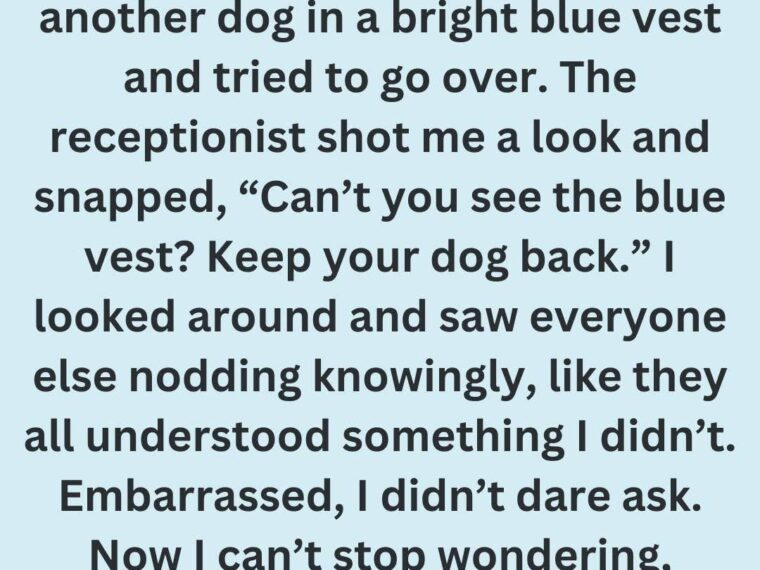Therapy Dogs: Comfort in Blue
Beyond service dogs, some dogs wear blue to indicate they are therapy dogs. These dogs aren’t necessarily trained to perform specific physical tasks but are trained to provide emotional comfort and companionship in places like hospitals, schools, nursing homes, disaster areas, and even airports.
Therapy dogs help reduce anxiety, lift spirits, and promote healing by simply being present. Their calm demeanor and friendly nature make them excellent companions for people undergoing difficult times.
When you see a dog with a blue vest or bandana in a hospital ward or nursing home, it’s a sign that this dog is there to offer comfort and shouldn’t be approached without permission. They’re a vital part of healthcare and wellness teams.
Dogs in Training: The Blue “Student Driver”
Not all dogs wearing blue gear are fully trained service or therapy dogs. Puppies and young dogs who are learning the ropes often sport blue vests, bandanas, or leashes to let the public know they are in training. Think of this as a “student driver” sign for pups.
This signals to people to be patient, give the dog some space, and avoid interacting with them too much while they’re still mastering their skills. Training a service dog can take months or even years, and this period is crucial for their success.
But What About Dogs Wearing Blue Just Because It’s Pretty?
While blue has many official meanings in the dog community, it’s also a popular color choice for purely aesthetic reasons. Many pet owners love blue because it symbolizes calmness, trust, and loyalty—qualities that perfectly describe their canine companions.
You might see a casual pet wearing a blue collar or leash simply because their owner likes the look or feels it suits the dog’s personality. Blue is versatile, flattering on most coat colors, and widely loved.
So, the presence of blue on a dog’s gear doesn’t always mean “service” or “therapy,” but understanding when it does can help us be more respectful and informed when encountering these hardworking animals.
Why It’s Important to Recognize Blue Vests and Bandanas
Understanding the meaning behind blue dog gear helps create a community that respects service and therapy animals. When you see a dog in a blue vest, it’s a cue to:
- Not distract the dog or handler
- Avoid petting or calling to the dog
- Give the dog space to work or train
- Offer respect and understanding to the handler’s needs
These simple actions can make a huge difference. Distracting a service dog can disrupt its ability to keep their handler safe and independent. Similarly, therapy dogs need calm environments to be effective in their comforting roles.
What Other Colors Mean in the Dog World
Blue isn’t the only color with a special meaning. Did you know that:
- Yellow ribbons or bandanas often indicate a dog that needs space, whether due to nervousness, recent surgery, or reactivity. The “Yellow Dog Project” is an international campaign to raise awareness that yellow means “please don’t approach without permission.”
- Red collars or gear can signal a dog who may be aggressive or reactive, alerting others to approach with caution.
- Green gear might indicate a dog is friendly and approachable.
Knowing these colors can help dog owners and the general public navigate encounters more safely and compassionately.
The Big Picture: Promoting Awareness and Respect
Wearing blue is more than just a fashion statement—it’s part of a larger effort to promote accessibility, compassion, and understanding. As more people rely on service and therapy dogs, recognizing these symbols fosters respect for the vital roles these animals play.
Whether a dog is working hard to keep their owner safe, comforting those in need, or learning the ropes, their blue vest, bandana, or leash tells a story of dedication and partnership.
Thinking of Adding Blue to Your Dog’s Wardrobe?
If you’re considering a blue accessory for your own dog, why not do it with meaning? Support local or national organizations that train service or therapy dogs. You might even look into volunteering with therapy dog programs or attending training classes.
And if you simply want your dog to look sharp for everyday walks, blue is a timeless choice that can showcase your dog’s calm and trustworthy nature. Just remember to respect the significance blue holds for working dogs and their handlers.
Final Thoughts
Next time you spot a dog wearing blue, pause to appreciate what that color represents. It might be a superhero service dog helping their handler navigate the world, a gentle therapy dog bringing comfort to those in need, or a dedicated trainee learning to make a difference.
These dogs in blue deserve our admiration, understanding, and respect. And who knows—maybe you’ll find yourself drawn to blue for your own pup, blending style with a deeper message of trust and support.
#Trending #ServiceDogs #TherapyDogs #DogCare





